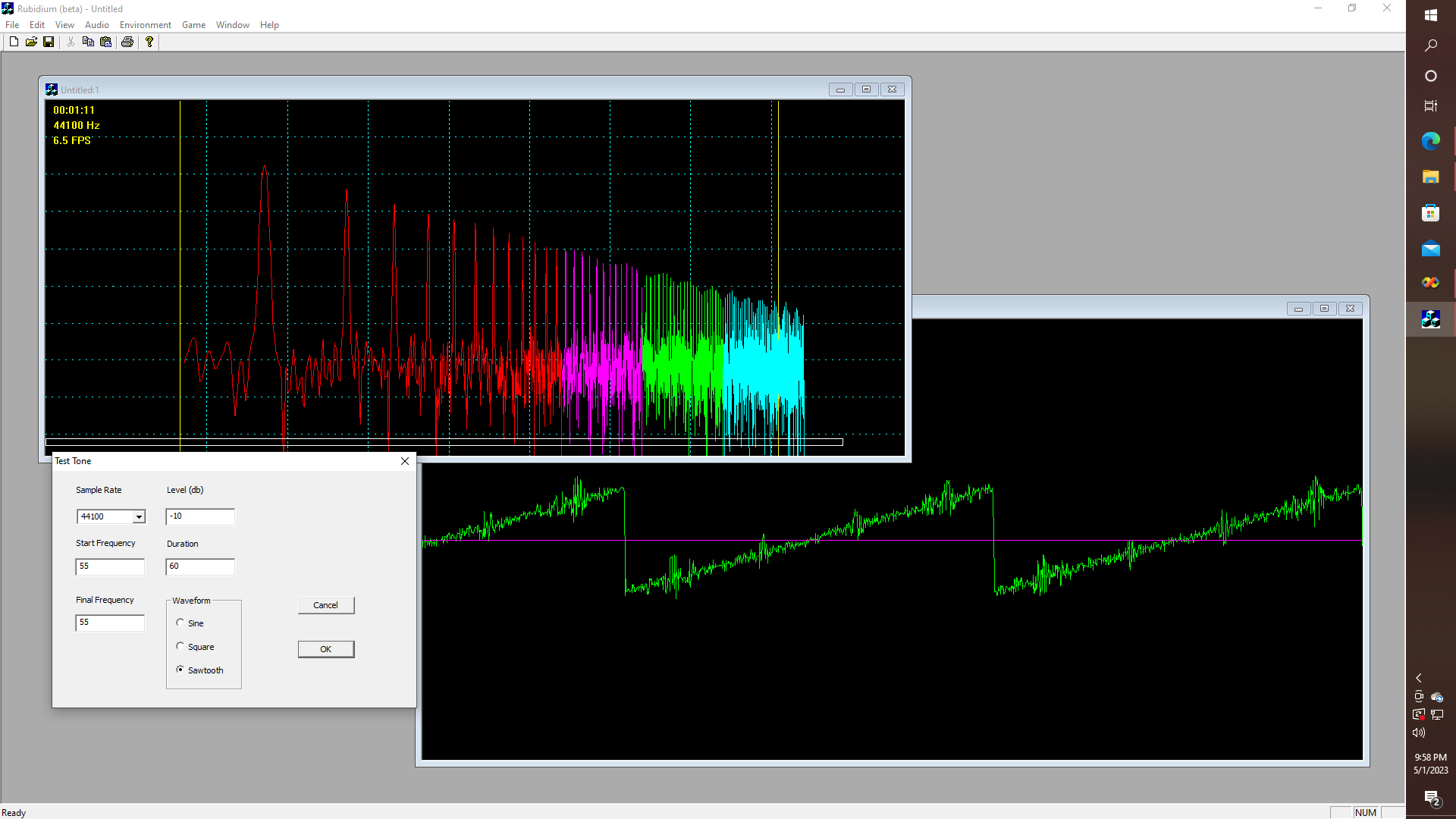
Or a sawtooth. O.K. I have this application where I was doing a simulation of how a sigma-delta analog to digital converter works a while back, and this is what I came up with when I used a VERY low bit rate, like 32 bits per sample bitstream model that in turn was being fed through a Gaussian window function in order to recreate 16-bit WAV stereo audio from the 1-bit data stream, with the obvious question being, therefore, just how low can we go, and still get something that might be acceptable in some context, like speech recognition, or music transcription, that is, if all we need to do is recognize pitch, or detect when a particular vowel is being spoken, etc.

And of course, it looks noisy, like what we see in a science fiction TV show like Lost-In-Space where John Robinson speculates that some derelict alien spacecraft has a "crystalline power source", or maybe Fantastic Voyage, where some scientists have to try to perform some brain surgery on another scientist by boarding a submarine that is then shrunk down to the size of a red blood cell.
But wait a minute! Nowadays, we have fractal coding, chaos theory, and some notional constructs that establish some kind of covariance between the so-called "fractal dimension", Feigenbaum's constant, and a bunch of other stuff that more rigorously generalizes the theory that there is some kind of relationship between the "logistic map" and the otherwise very broad field of "convolutional codes", and of course if sigma-delta is a type of convolutional code, they why not build something based on Chua's circuit that actually tries to model a neuron or two, and see if we can trick an otherwise preposterously simple circuit into doing something like pitch or even vowel recognition, that is by using a hybrid approach that incorporates op-amps, flip-flops, and possibly a 555 or two?
 glgorman
glgorman
Discussions
Become a Hackaday.io Member
Create an account to leave a comment. Already have an account? Log In.